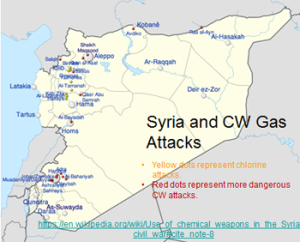September 23, 2015

A one-week course held in the CNS Washington, DC, office offered US government personnel cutting-edge presentations on key issues relating to chemical and biological weapons (CBW) from leaders in this field. Covering the history of state-level CBW programs, the latest technological developments with the potential for misuse, and recent developments in Syria and Iraq, among other critical topics, CNS provided twenty-five mid-level US officials a condensed, yet wide-ranging review of these proliferation and security issues.
Training Course for Professionals in Chemical, Biological Weapons
Highlights included:
- Presentations by Ambassador Robert Mikulak (the most recent US permanent representative to the Organization for the Prohibition of Chemical Weapons) and Hon. Andrew Weber (former assistant secretary of defense for nuclear, chemical, and biological defense programs);
- A first-person account of the 2001 anthrax attack on the offices of then Senate Majority Leader Tom Daschle, including how the roughly fifty at-risk staff members decided to become test subjects in a clinical protocol to evaluate alternative antibiotic therapies;
- An introductory-level session by a leading National Institutes of Health expert on “CRISPR”—clustered regularly interspaced short palindromic repeats—which, as described in Nature, allows “researchers to quickly change the DNA of nearly any organism— including humans” and could lead to the creation of powerful, new BW agents;
- A review of CW possession and use in the Middle East, including the latest indications that ISIS has not only used high-quality sulfur mustard against Kurdish forces, but also appears to have produced this persistent blister agent itself; and
- Approaches for countering the CBW threat through defensive measures, deterrence, capacity building (especially in the public health sector), and the calibrated regulation of potentially dangerous research and development activities.
Participants all have responsibilities within the US government addressing various aspects of the CBW challenge, including monitoring US compliance with key treaties, blocking illegal transfers of CBW-relevant equipment and materials, and supporting relevant intelligence efforts. The course sought to broaden participants’ perspectives and deepen their knowledge of these issues, which pose increasing dangers for the United States and the international community.
Next Course
Nuclear Weapons Policy and Arms Control: October 26 – 30, 2015
